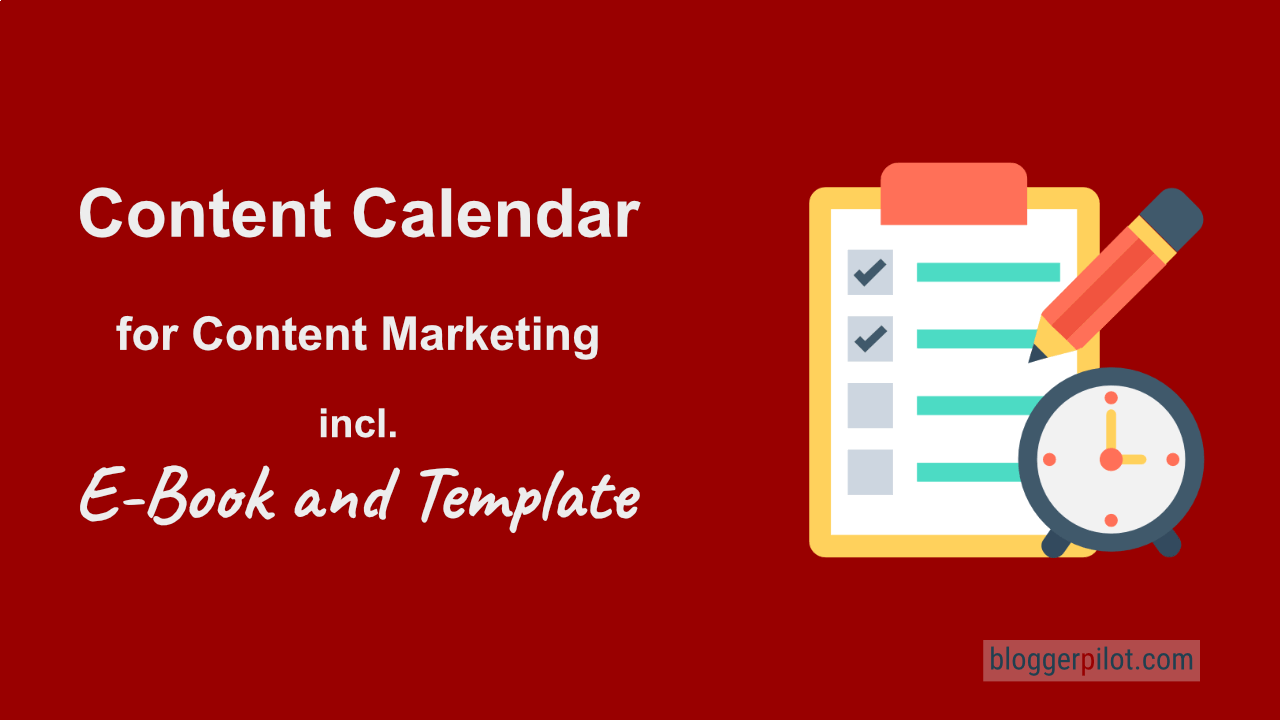Content Calendar and Marketing Editorial Plan Download Template
The content calendar regulates which content is created or published when and by whom. The content can be text, images or videos. The start for successful inbound marketing.

18Seiten inkl. Redaktionsplan-Vorlage
Direkt in deinen Posteingang 👇
How do you want to write your blog articles?
- You have an idea, drop everything else and plunge into a new article without planning. Maybe even a whole new topic that doesn’t even fit into your content marketing plan.
- You plan ahead. You have an content calendar that accompanies and guides your website. New ideas are written down and scheduled after careful consideration.
An content calendar is especially important in teams. But as a blogger, you should also create a content and schedule plan for your content.
Appropriate reading: What is content?
Content marketing in particular starts with working out your categories, silos, and cornerstone content ahead of time.
How often are you posting? Do you really have regular publishing schedules that drive your content marketing? If not, search engines will never reward you with high traffic.
Google wants regular and frequent content from you. Only then will you be listed at the top of the search engines as an authority.
No matter how good your articles are, if you only publish every two months, you’ll never get noticed.
What is an content calendar?
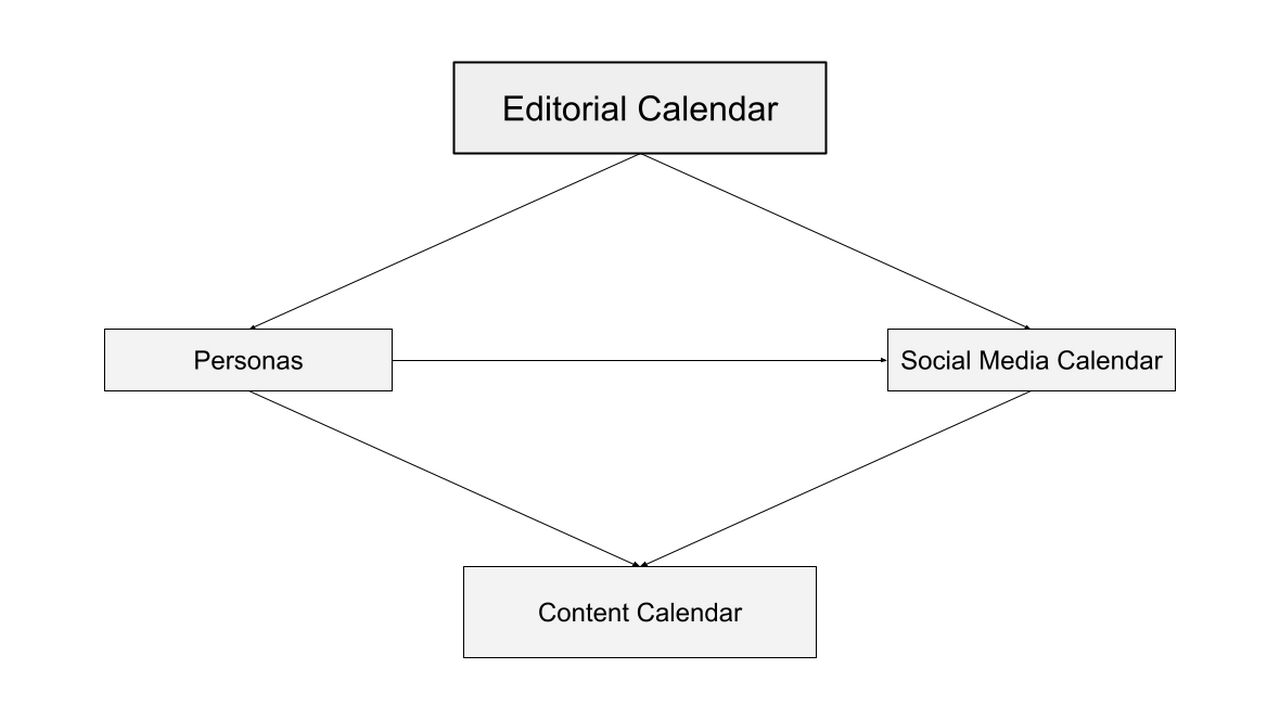
An content calendar can be the overarching structure for other planning tools:
- Editorial Calendar
- Personas
- Social media editorial plan
- Advent calendar
- Press releases
In most cases, however, a single document is sufficient as an content calendar. Alternatively, the terms editorial calendar or blog calendar or the English term Editorial Calendar is used. Spreadsheets such as Excel or Google Spreadsheets have proven themselves as a medium. But also Kanban boards in Trello or similar tools are very suitable.
Requirements and preferences play a big role in the choice.
Use defined dates for the publication of your articles. This puts an end to postponing. The editorial calendar brings discipline to your workday.
Besides the typical blog calendar, the content calendar can help for other areas:
- Facebook marketing (social media in general)
- Video marketing
- Storytelling marketing
Let’s take a further look.
Examples
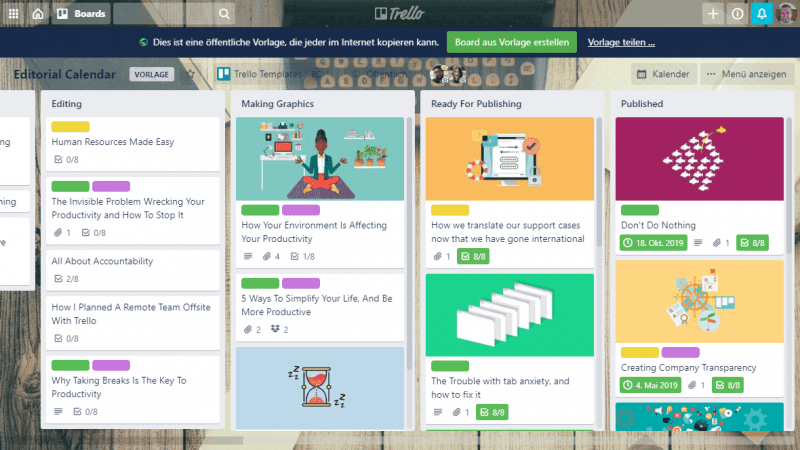
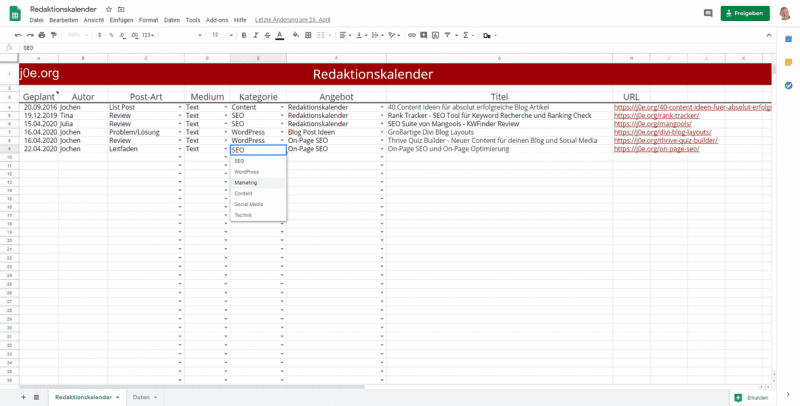
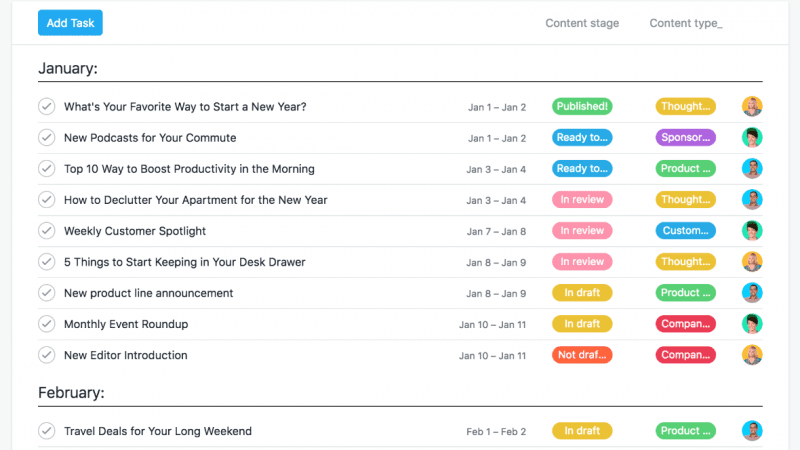
Who needs an content calendar?
You need an content calendar!
Anyone who regularly publishes copy on their website, creates social media posts, or maybe is even an editor on a small team. Any blogger, entrepreneur, or service provider who wants to trade aimless posting for a successful content strategy.
If you’re spending a lot of time on your website, or posting way too little copy and just not getting anywhere. Believe me, a sensible content plan will transform your editorial life.
Responsibility, deadlines
If you’re really writing alone on your project, accountability doesn’t matter, but deadlines and dates you still want to meet.
For larger projects, the editor-in-chief has the final say and is often responsible for scheduling as well.
Something that is typically forgotten, the vacation calendar, should definitely be taken into consideration when planning.
Responsibilities should be planned according to the skills and talents of the editors. If the perfect writer is on vacation, it may be better to postpone the deadline than to publish a half-baked article. However, such bottlenecks are best identified with an editorial plan.
For outages, it’s a good idea to prepare buffer content in advance
If readers are used to weekly posts, this should be maintained, even if two writers are unavailable at the same time. This is exactly when the buffer content comes into play. Planning ahead is everything!
If deadlines with external customers or clients are an issue, the internal capacities for this deadline should be planned precisely. Otherwise, nasty surprises are bound to happen.
Before you start!
Simply creating an content calendar unprepared is not the optimal way. You should work on the prerequisites beforehand.
Work out and plan a long-term content marketing strategy.
- For which target group do I write?
- What is the main topic I want my content to revolve around?
- What media (text only, or video…) do I want to serve?
- How often can I realistically publish new content?
You should answer these questions in writing. The result will help you to create your editorial calendar.
What data should a good content calendar contain?
First, there is no one plan that works for everyone. Rather, each writer and team needs to plan and constantly adjust their perfect working environment.
Therefore, don’t go crazy in the beginning. Invest 1-2 hours in defining your goals and objectives. Create the first version of your Excel content calendar and get started. Then make necessary adjustments. Add necessary columns or remove unnecessary data.
Important information for your editorial calendar:
- Date (publication date)
- Author (you can omit the editor if you write alone)
- Post type (review, guide, interview)
- Medium (text, audio, video)
- Category (Your blog category)
- Offer or CTA (Your target. Newsletter, affiliate, product)
- Title (Initially the working title, later the final title)
- URL (The address – https://)
Elaborate content calendar could still include the following:
- Target persona (Who is the text aimed at? An example persona with the characteristics of your target audience)
- Main keyword (s)
- Status (planned, in progress, published)
- Campaign (For large campaigns, consisting of several units)
- Result (evaluation of success after a certain period of time)
With all this information, you already have a relatively sophisticated content calendar. Leave out what you don’t need, add what you are missing. Maybe add tags or the main keyword of the article.
Additionally, create a place where you can collect all your ideas. Brainstorming is very effective in a team.
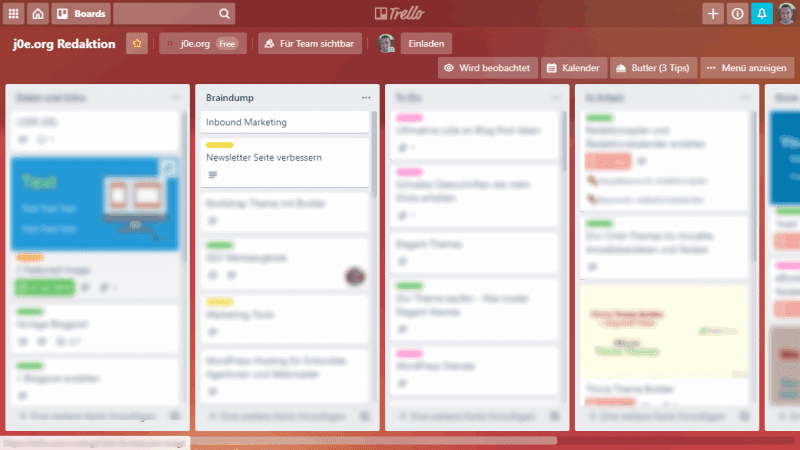
I like to call this area Braindump. Just throw in everything that comes to mind. You’ll always have “the good idea.”
Content recycling
Especially successful content can be brought out again and recycled. For example, you could answer the questions from the old article in a new article. Or use a popular article as a template for a video and publish it on YouTube and on your blog.
You’ll also schedule this recycled content in your content plan.
Review and adjust regularly
An content calendar is not a static document. The plan grows and changes with your online presence. Don’t make hasty changes, but take a few hours every few months to review your content marketing strategy.
- Has a topic or category been neglected? Perhaps that area should be omitted altogether.
- Have new topics crept in that don’t have a proper place yet?
- Is your main topic clearly visible on the home page? Make your USP clear and obvious!
- Have you achieved your goals? Are your products and CTAs still optimally placed?
Use a tool like Google Analytics to measure your success.
Stay flexible!
Get involved with completely new ideas from time to time. Discover a new social medium. Have you ever thought about complementing your texts with your own videos?
Enter such burgeoning thoughts into your braindump document. Work on them and maybe they’ll flow into your active content plan.
Don’t be afraid of failure!
Some concepts just don’t work. Then delete them from your active content marketing plan again.
Start with the content calendar download
Want to dig deeper into the topic of content calendars? Are you looking for real professional knowledge? Then you’ll find a 20-page e-book with all the information you need on the topic of content marketing plans and editorial calendars.
Also included is a ready-to-use content calendar template for download and insider knowledge.

18Seiten inkl. Redaktionsplan-Vorlage
Direkt in deinen Posteingang 👇
Start with our free editorial plan download as an Excel template and for Google spreadsheets.
The plan is ready to use right away. But I would still recommend you to make small adjustments to your specific needs.
Content Calendar FAQ
More on the topic of content:
Conclusion: mandatory for inbound marketing and bloggers
Simply writing in the blue does not lead to the desired success. Structure and planning are part of content marketing. If you’re not good at Excel, plan your content with a pad and pencil.
Don’t forget to do an SEO analysis. At least rough mistakes should be corrected.
Once you’ve started with your content strategy, you’ll quickly realize what exciting paths are opening up for you.
Now I’m curious, too. Do you keep your content calendar?
